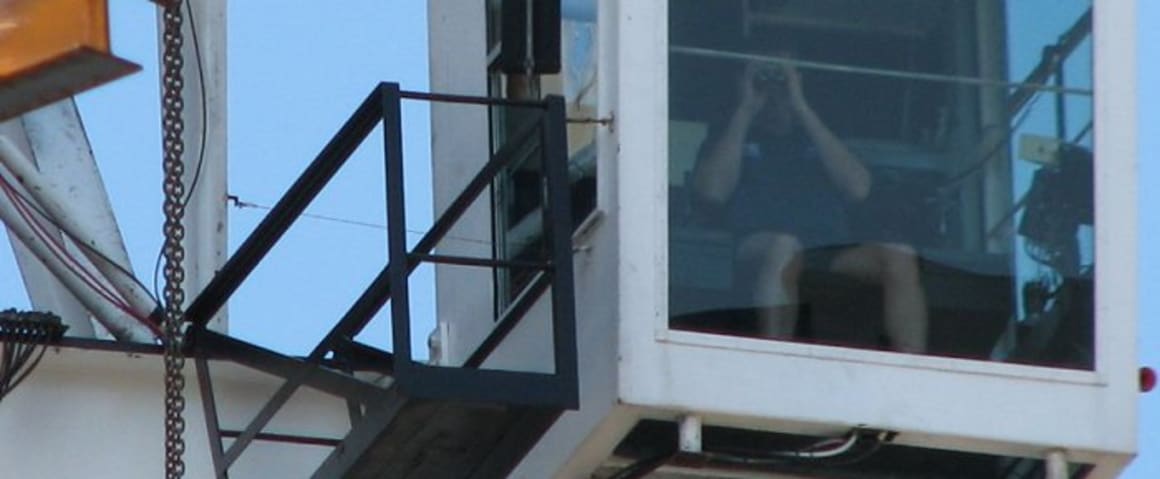The cranes have it - A Melbourne construction overview

Articles have surfaced in recent weeks highlighting the number of cranes appearing throughout Melbourne and the implied construction/economic activity that follows. Yesterday yielded the most recent piece with the Australian Financial Review running an article titled 'Crane count a good construction indicator' where international property and construction practice Rider Levett Bucknall counted the number of cranes populating the skylines of state capitals - an index of construction prosperity if you will.
Quoting the article, "Melbourne has 43 visible cranes in the CBD, and 15 more within a five kilometre radius. Of that, 33 cranes are supporting residential developments. There are 13 on commercial sites, six are on health sites and the remainder are working on sport, retail and education projects."
Using the resources at Urban.com.au's disposal we've decided to take this index a step further, today providing a breakdown of greater Melbourne's crane count accurate to within one or two units. Melbourne first broke through the 100 tower crane barrier during November 2012, with the peak achieved during June 2013 where an impressive 108 tower cranes were plying their trade.
While a General Cranes unit was disassembled last weekend at Melbourne Star and Melbourne Sky within Melbourne's CBD, Clark Cranes erected a unit for a 77 apartment complex at 701 Barkly Street Footscray bolstering the current count to 97 cranes visible over greater Melbourne's skyline. Although many projects are in the construction phase, it's interesting to note that pre-sales for certain large residential projects commenced well over two years ago. Regardless the table below is gives a clear indication of Melbourne's current construction progression.
| Locality | Total | Residential | Commercial | Institutional |
|---|---|---|---|---|
| Melbourne CBD | 26 | 18 | 8 | 0 |
| Melbourne LGA / Docklands | 11 | 5 | 5 | 1 |
| Southbank / Carlton | 17 | 8 | 0 | 9 |
| Port Phillip | 2 | 2 | 0 | 0 |
| Stonnington | 7 | 7 | 0 | 0 |
| Boroondarra | 6 | 5 | 0 | 1 |
| Yarra | 8 | 7 | 1 | 0 |
| Whitehorse | 4 | 1 | 2 | 1 |
| South East suburbs | 5 | 3 | 0 | 2 |
| North West suburbs | 11 | 9 | 1 | 1 |
| All | 97 | 65 | 17 | 15 |
What can be deuced from this? Residential projects account for 67% of tower cranes in use. While a number of big ticket projects such as Richmond Icon, Central South Yarra and Vision Apartments will gain cranes in coming months, it's expected the overall number of cranes working on residential projects will decrease, mirroring current market sales. The suburban spread of tower cranes is healthy with localities such as Sandringham, Pascoe Vale and Glen Iris hosting sizeable residential projects, further bolstering the march of apartment living into outer suburbs.
Commercial projects are holding up well given the market is cycling out of its peak. Aside from KPMG anchoring a substantial office development within Collins Square relatively few office projects are in the pipeline. Institutional projects cover medical facilities, government buildings and education builds. The Victorian Comprehensive Cancer Centre, Mercy Fernhill, Royal Children's Stage 2, Warringal Private Heidelberg and Carlton Wellbeing headline big ticket medical projects requiring tower cranes; always a good sign when money is invested into fundamentals such as health.
In the wider sense consigned to history are the boom and bust days that typified Melbourne during the 1990's where no cranes were visible in Melbourne's skyline for years on end. While any free market is susceptible to corrections, the cycle has flattened out considerably to the point where any project can commence subject to its own stipulations. Add the proliferation of apartment living and tower cranes will always be a part of Melbourne's vista, as they should be as part of any progressive city.